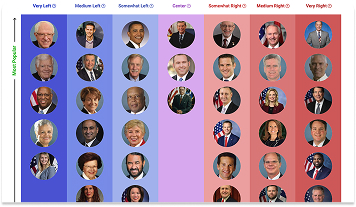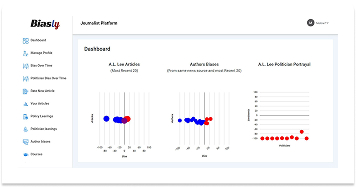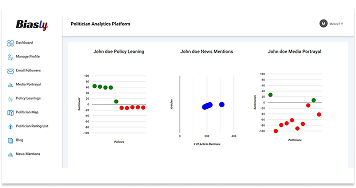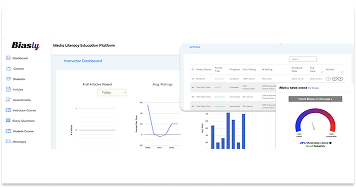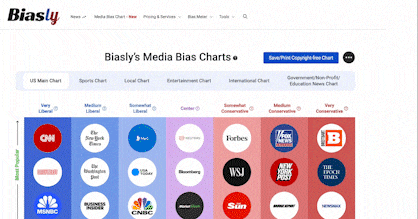Bias Meter
Extremely
Liberal
Very
Liberal
Somewhat Liberal
Center
Somewhat Conservative
Very
Conservative
Extremely
Conservative
-100%
Liberal
100%
Conservative
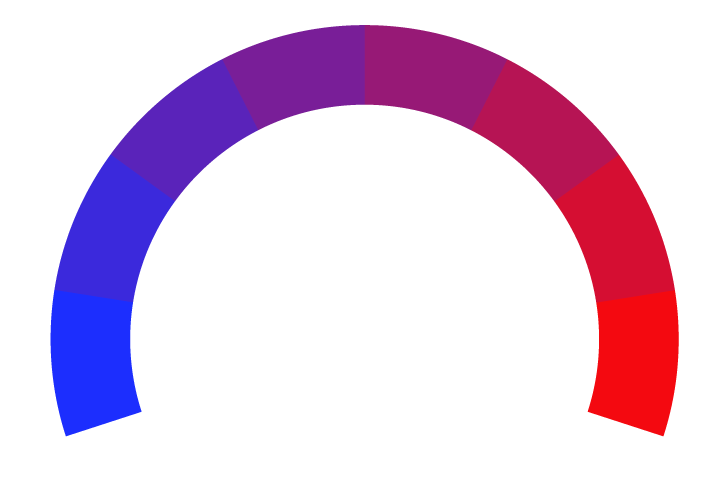
Biasly determines media bias ratings through a dual-layered approach combining artificial intelligence and analyst review. The platform’s proprietary bias detection engine, Bias Meter, evaluates sentiment, policy position alignment, and language framing across thousands of data points in news articles. Analysts then verify and interpret the AI’s findings, providing additional context where needed. Learn more
- Profile
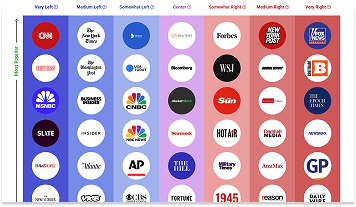
The UK Sun on the media bias chart
The UK Sun has a Bias Score of 26% Somewhat Right which is based on a variety of factors including its policy and politician leanings, article ratings, and the use of biased language. Its Reliability is rated as Average, and additional analytical insights are available in the other tabs.
- Bias Rating
26% Somewhat Right
- ReliabilityPolicy Leanings
28% Somewhat Right
Extremely
LiberalVery
LiberalModerately
LiberalSomewhat Liberal
Center
Somewhat Conservative
Moderately
ConservativeVery
ConservativeExtremely
Conservative-100%
Liberal100%
Conservative
Average Reliability
*Our bias meter rating uses data science including sentiment analysis, machine learning and our proprietary algorithm for determining biases in news articles. Bias scores are on a scale of -100% to 100% with higher negative scores being more liberal and higher positive scores being more conservative and 0% being neutral. The rating is an independent analysis and is not affiliated nor sponsored by the news source or any other organization.
Politician Portrayal14% negative
Continue For Free
Create your free account to see the in-depth bias analytics and more.
By creating an account, you agree to our Terms and Privacy Policy, and subscribe to email updates.
Policy Leanings Analysis
Policy | Bias score |
|---|
The UK Sun Editorial Patterns
The UK Sun’s coverage of political topics often reflects a Somewhat Right bias with consistent patterns in phrasing, source selection, and thematic focus that are Lean Right. While the outlet strives for journalistic standards as a whole, many of its journalists reflect personal convictions through the choice of issues, framing, and word usage. This content analysis examines how The UK Sun handles liberal and conservative issues and evaluates its language choices and editorial tendencies.
Coverage of Liberal vs. Conservative Topics
The UK Sun’s coverage frequently favors conservative viewpoints and examines liberal policies with more criticism. Economic risks, immigration, and law-and-order topics are among the most common emphases in its headlines. And while topics vary, there is a prevalent pattern in space, quotations from conservative sources compared to liberal or third-party sources.
When The UK Sun covers Liberal issues like climate initiatives, social welfare, and labor reforms, they are often framed around potential negative outcomes. Positive aspects and long-term benefits are rarely highlighted. However, there is a lack of coverage on discussions over sustainable measures in conservative discussions as well. This approach can influence readers’ perception of policy effectiveness on both sides of the political spectrum.
Conservative topics are presented positively, nonetheless, and The UK Sun is known to favor tax cuts, deregulation, and border enforcement. Stories on these topics often highlight business growth or job creation. Immigration coverage emphasizes strict controls and security measures, and uses quotes from conservative politicians. When covering energy policy, reports regard market-based solutions over government intervention. And other developments, such as Brexit, are framed as opportunities for economic independence. Overall, The UK Sun consistently seems to favor right-leaning narratives while presenting left-leaning policies with critical scrutiny.
Policy and Issue Framing
The UK Sun often chooses to emphasize drama, risk, and immediacy. Economic, immigration, and policies on labor unions are often portrayed as urgent threats or opportunities. For example, labor reforms are described with words like “crush” or “devastate,” which amplify pre-existing social disruption. Welfare and climate policies are framed around inefficiencies. As mentioned in The UK Sun’s coverage, long-term gains are rarely included when presenting stories.
Dramatic photos and highlighted numbers create stimulating visual cues and reinforce The UK Sun’s value for immediacy. “Such visual framing heightens emotional reactions and makes readers more likely to perceive issues as urgent or threatening. This is a subtle form of priming, a bias that prepares readers to expect a certain view even before reading. The result is a news environment where readers’ perceptions are shaped less by evidence than by appealing cues embedded in presentation.
However, Issue framing extends beyond language and visuals to source selection. Conservative voices, business groups, and government officials dominate quotes and interviews. Liberal policymakers or independent experts often receive limited coverage or brief mentions. Migration stories emphasize enforcement failures or economic burden, while clean energy policy debates highlight costs over environmental benefits. Health, education, and social programs are sometimes presented through controversy rather than factual analysis. Overall, The UK Sun frames issues to prioritize immediacy, conflict, and alignment with its audience’s conservative-leaning expectations. This selective framing shapes readers’ understanding and reinforces pre-existing perceptions.
Coverage and Relevance
The UK Sun’s coverage strategy balances sensationalism, entertainment, and news to maintain readership. Its tabloid format prioritizes bold headlines, attention-grabbing visuals, and relatable stories. Celebrity gossip, sports, and lifestyle content attract broad audiences while political coverage reinforces conservative viewpoints. This blend keeps the outlet relevant in a media landscape increasingly dominated by digital and social media consumption. Direct search traffic remains its primary source of readers, with social media accounting for only a small share.
The tabloid approach influences political reporting and issue framing. Simplified narratives, dramatic language, and visual cues make complex policies digestible. Ownership under News UK, now fully controlled by Lachlan Murdoch, emphasizes profit-driven engagement while retaining editorial influence. The focus on immediacy, relatability, and entertainment allows The UK Sun to capture attention in competitive news markets. By blending popular culture with political commentary, the outlet remains culturally influential, connecting with audiences who prefer concise, impactful stories over detailed policy analysis.
The UK Sun Bias Analysis
The UK Sun was first published in 1855 and later transformed into its current tabloid format under Rupert Murdoch in 1969. The paper is based in London and published by News UK, a division of News Corp. According to SimilarWeb, The UK Sun is the seventh biggest outlet in the UK with 62.8 million monthly visits. Bold, attention-grabbing headlines on everyday issues have made the paper a relevant site in the country’s media landscape.
Today, the path through which news reaches its audience is evolving rapidly. The University of Oxford reports that in the last 11 years, social media has seen a steady increase as a source of news, while TV, print, and even online papers have seen a slow decline. The Electoral Commission responds to this trend with data showing that most users still perceive social media as less reliable than television or radio. However, The UK Sun reaches readers through direct searches and organic searches, with social media making up only 3.2% of its traffic.

Source: Electoral Commission
The UK Sun covers News, Sports, Showbiz, Health, as well as other sub-topics. The outlet keeps its content current with bold headlines and intriguing visuals. But celebrity gossip may not be its most controversial stories. The political landscape in the UK proved to be a skeptical and mistrusting audience to represent and inform. According to the World Values Survey in 2022, confidence in political parties among Britons is among the lowest of higher-income democracies. Support for experts making decisions, rather than politicians, has reached record highs compared to other Western nations. And in polls from King’s College London, only 13% of UK citizens expressed trust in the government. This creates a notable backdrop for how audiences engage with outlets covering political stories, like The UK Sun.
Is The UK Sun Biased?
Based on Biasly’s evaluations, The UK Sun is rated as Somewhat Right.
By examining content patterns and the broader context of media influence, we aim to offer a balanced perspective on The UK Sun’s political bias.
How Does Biasly Rate News Sources?
Biasly uses proprietary algorithms and a team of analysts to provide comprehensive bias evaluations across thousands of news outlets. Over 200,000 articles from more than 3,200 sources have been analyzed to identify the most accurate and unbiased stories.
Biasly assigns each outlet three key scores:
- Reliability Score – Reflects factual accuracy
- AI Bias Score – Generated via natural language processing
- Analyst Bias Score – Assessed by human political analysts
These scores are based on seven core metrics: Tone, Tendency, Diction, Author Check, Selection/Omission, Expediency Bias, and Accuracy. These elements help analysts and algorithms evaluate the political attitude conveyed by each article.
Biasly’s Bias Meter ranges from -100% (most left) to +100% (most right), with 0% indicating neutrality. The system evaluates individual articles based on political terms, policies, figures, and sentiment to calculate precise bias ratings.
Is The UK Sun Politically Biased?
The UK Sun earns a Somewhat Right rating for its AI Bias Score and a Somewhat Right for its Analyst Bias Score. The Analyst Bias Score is generated by reviewers from liberal, moderate, and conservative backgrounds. Analysts reviewed 15 The UK Sun articles and noted preferences for conservative views on topics such as the border wall, environmental regulations, and competitive capitalism. However, the paper displays inconsistency of content, as its coverage tends to depend on the general opinion of its audience. According to The UK Sun’s About Us page, its objective is not limited to political updates,
“It is an instigator, an entertainer, a cultural reference point, a finger on the pulse and a daily relationship.”
While The UK Sun often presents itself as the “voice of ordinary people,” its political reporting leans toward reinforcing conservative-populist narratives. Jack Elsom, a political editor, reflects this mix of politics and entertainment in his article, From Pit to Parliament.
“Reform is a working-class party which isn’t bothered where you were born, what education you’ve had, what employment you have had. We just want the best for family, community, and country.”
Although presented as Anderson’s words, the article doesn’t interrogate this claim — instead letting it stand as a self-description, aligning with The UK Sun’s populist framing of Reform as an “ordinary people’s party.” Framing Anderson as rooted in camaraderie, grit, and “common sense” amplifies his appeal to readers who identify with working-class authenticity.
Minimizing scrutiny, The UK Sun prioritizes resonance with its readership. This defines it more as a cultural touchpoint than a news source.
Analysis of Bias in The UK Sun Online Articles
The UK Sun has maintained its platform by providing relatable coverage of breaking news. Given that cultural trends quickly shift, striving to agree with the audience’s beliefs can hinder objectivity in reporting. When delineating opinion and fact in stories, it is essential to ask: Is The UK Sun truly biased?
To evaluate this, we can analyze select The UK Sun articles through several of Biasly’s bias rating criteria: Tone, Tendency, Author, Diction, and Expediency Bias.
- Tone: The overall attitude conveyed by the article
- Diction: Specific word choices made by the writer
- Author: The background and social presence of the journalist
- Tendency: Patterns of bias in the writer’s broader body of work
- Expediency Bias: Quick visual or textual indicators like headlines and photos that imply bias

Source: The UK Sun
The piece, ‘Union Backed Damaging workers’ rights measures won’t be diluted provoking fury from business who say it will hit growth,’ begins with a confrontational tone in its title. The author frames Labour’s bill as both harmful and defiant, describing a package that will not be “watered down.” The overall tone leans toward business warnings of crisis, as the author claims developments go as far as to provoke fury. Shadow Business Secretary Andrew Griffith argued:
“Labour’s (Un)Employment Rights Bill will crush businesses and job opportunities alike. All while everyone endures more strikes. A real reset means shelving this bill.”
The phrasing combines the dramatic verb “crush” with imagery of “enduring more strikes,” amplifying a sense of social disruption. The author labels the policy as an outright threat rather than a debatable reform, and positions Labour as reckless. These decisions favor business and opposition voices. Presenting the bill as having catastrophic consequences rather than a balanced policy discussion depicts conservative views.
Editorial choices in source selection further contribute to a one-sided leaning. Ryan Sabey, the author, selects quotes that give extensive space to business groups and Conservative figures, while unions like Unite and the TUC receive shorter, reactive mentions.
The article zeroes in on figures like the “£5 billion” price tag and predictions of job losses. By spotlighting these particular details, it frames Labour’s plan as risky for growth. The UK Sun’s angle may seem familiar to readers, with its taxes, strikes, and regulations.
The article relies on visual and numerical cues to guide readers’ impressions. For example, a Getty image of Angela Rayner “exiting a car” draws attention to a public figure rather than the policy itself. Meanwhile, figures like “£5 billion” and “150,000 fewer people in work” are highlighted as digestible markers of potential impact. This suggests the article aims to capture attention quickly, rather than explore the topic with more nuanced detail.
Overall, the piece prioritizes drama and conflict rather than policy details or long-term labour market impacts. Including workers’ perspectives would have given useful insight into how the bill affects employees’ livelihoods. A more balanced approach would also include benefits and use more neutral language in place of sensational words.
Another article titled ‘CARD TRICK Asylum seekers are still getting money on taxpayer-funded credit cards after being granted refugee status’ tackles welfare spending and migration. Like the first article, it highlights opposition voices and gives little space to government explanations. Quotes from the Conservative Shadow Home Secretary and Reform UK leader dominate. Immigration is presented as Labour’s incompetence and a populist rallying point. Starmer’s government is shown as failing both practically and morally by allowing migrants access to “luxuries unavailable to taxpayers.” As one Shadow minister notes,
“The official payroll data already shows 150,000 fewer people in work. That’s 150,000 reasons to change the Bill or the regulations to follow.”
The article frames migration more as a political battlefield than as a humanitarian issue. It combines outrage over government spending with cultural fears of porous borders. By comparing £9.95 weekly allowances to images of gambling or “luxury hotels,” it portrays asylum recipients as undeserving. This approach reflects wider narratives where individual benefit recipients are scrutinized more than systemic government inefficiencies. The focus is on morality and fairness, linking immigration with welfare abuse. Expediency bias is clear. Simple storylines such as “taxpayers cheated” or “Labour lost control” replace deeper discussion of administrative oversight.
Analysis of The UK Sun Opinion Articles
It is easy to mix reporting with opinion, and understanding this distinction is key to media literacy. Opinion pieces guide interpretation and emphasize particular perspectives, whereas standard reporting should prioritize facts. Recognizing these differences helps readers critically evaluate the influence of word choice, selective evidence, and prescriptive language.
One example is the article “Until Starmer tackles root causes of stagnation in Britain, he won’t stand a chance of improving voters’ lives.” The editorial leans strongly right, negatively portraying Labour policies and leaders. The author chooses to highlight incompetence and mismanagement, where the opposition is presented as an obstacle
Specifically, the author calls rail unions “knuckle-headed,” and describes the welfare bill as “bloated £300 billion.” They outdo Ed Miliband’s energy policies, saying:
“An ECO zealot, Ed Miliband, hangs around in government like a bad smell from a dodgy boiler. The Energy Secretary resisted the PM’s attempt to shunt him into another department …. Now we learn that hard-hit taxpayers …. As with his disgraced former colleague … ‘Do as I say, not … ‘”
Selective examples support this perspective. The article emphasizes the London Underground strike’s cost and Starmer’s perceived failure to reform welfare or limit union influence. At the same time, it leaves out possible benefits or alternative interpretations. Immigration is discussed through a hardline lens, even noting,
“Small boat crossings under Labour are on the brink of hitting 50,000” and promoting a “Rwanda-style plan” to deter arrivals.
The editorial goes beyond critique by offering explicit recommendations for Labour’s next steps, from rolling back certain employment reforms to reshaping welfare policy. This prescriptive approach highlights the paper’s role as a guide for particular political solutions rather than as a neutral observer. Combined with selective examples and charged language, it reinforces the sense that the piece is designed to advocate a specific agenda.
Readers should be aware that opinion-heavy reporting often blends facts with judgment. It can amplify certain perspectives, downplay others, and use loaded language to guide interpretation. Being alert to selective examples, prescriptive recommendations, and emotionally charged wording helps readers distinguish commentary from objective reporting. Supplementing such pieces with further research supports a more informed understanding of current events.
Who Owns The UK Sun?
The newspaper is published by News UK & Ireland Ltd., headquartered at The News Building near London Bridge. Rebekah Brooks serves as Chief Executive, while Victoria Newton is Editor-in-Chief. Rupert Murdoch retired in November 2023, passing leadership to his son, Lachlan Murdoch, as chairman of News Corp. In September 2025, the Murdoch family finalized a succession plan securing Lachlan’s control of key outlets, including The UK Sun, until 2050. News Corp oversees global content production and distribution across print, television, and digital platforms.
Rupert Murdoch first acquired The UK Sun in 1969 after buying the News of the World. He relaunched it as a tabloid, establishing its mix of hard news, entertainment, and attention-grabbing features. Based in London, the paper covers politics, sports, showbiz, and lifestyle topics, remaining one of Britain’s most recognizable publications. Its sales strategy relies on bold headlines, often using puns, alliteration, or playful language to capture attention quickly.

Source: Wikipedia
The UK Sun operates under editorial standards set by the Independent Press Standards Organisation (IPSO) and the Editors’ Code of Practice. A Legal and Compliance team handles corrections and complaints, while editorial choices are independent from commercial influence. News UK also promotes diversity and inclusion, offering apprenticeships, scholarships, and media partnerships to broaden representation in journalism. These initiatives aim to maintain accountability while preserving the paper’s distinctive voice.
How to Evaluate Bias
Although Biasly rates The UK Sun as Somewhat Right, it’s important to remember that bias can vary from article to article. Text. So, let’s learn how to evaluate media bias.
Recognizing media bias requires awareness and critical thinking. Often, readers trust news sources that affirm their existing beliefs—a psychological tendency known as confirmation bias. This makes it harder to identify slanted narratives or one-sided reporting.
To combat this, it’s essential to challenge your assumptions by consulting multiple viewpoints and verifying news through third-party analysis. Tools like Biasly’s media bias ratings allow readers to compare the same news story across the political spectrum.
Ultimately, bias isn’t always a matter of what is said—it’s also about what is left out, how topics are framed, and which stories are chosen for coverage. Learning to recognize these patterns can help readers make more informed decisions and develop greater media literacy.
To start comparing news outlets and gain a better understanding of bias, sign up for Biasly’s Media Bias & News Analytics Platform. Doing so helps readers gain clarity on how stories vary between sources.
The UK Sun Reliability Analysis
Is The UK Sun Reliable?
The UK Sun’s conservative stance and tabloid style give it cultural influence but lower reliability ratings compared to broadsheets. Its reporting uses bold headlines and emotional framing rather than building credibility through data and policy analysts. This approach keeps it relevant in a fragmented media landscape, yet raises concerns about accuracy and selective coverage. Broader trust data underscores this tension. The Electoral Commission (2024) found that while reliance on social media for news is rising, 80% of users report encountering misinformation online. Numbers like this are reflective of widespread skepticism toward information sources today.
Concerns over digital manipulation intensify these dynamics. A 2024 Cornell University study revealed that 90% of people worry about deepfakes, though few feel confident in detecting them. The UK Sun has devoted extensive coverage to the spread of deepfakes, echoing these anxieties and amplifying public fears. However, its quick, tabloid-style analysis rarely goes beyond highlighting risks. Articles emphasize urgency, caution, and the negative impacts of misinformation. At Biasly, our analyses go further by evaluating both media bias and reliability, helping readers approach outlets like The UK Sun with clarity in a landscape shaped by distrust and digital threats.
How to Evaluate Reliability?
Reliability refers to how trustworthy or accurate a news source is. If we can’t trust what we read, then continuing to consume content from that outlet serves little purpose. So how do we evaluate a news outlet’s reliability?
There are several potential measures of reliability to look out for when trying to determine whether a media source is reliable or not. Red flags for an unreliable article can include the presence of wild, unsubstantiated claims, facts dependent on other unreliable sources, heavy use of opinionated language, and more. In contrast, hallmarks of a reliable source include:
- Absence of subjective language
- Citing credible sources (e.g., .gov, .edu, academic references)
- Verifiable facts and statistics from multiple outlets
- Use of primary sources, like interviews or transcripts
- Consistency with coverage across other platforms
Biasly’s reliability scores incorporate these elements in evaluating media outlets.
So How Does The UK Sun Fare in Its Reliability?
The political reliability index developed by Biasly assesses both accuracy and trustworthiness. The UK Sun currently holds Average Reliability Score, which is calculated as a weighted average of:
- Fact Analysis Score – Evaluates the accuracy of claims, facts, and evidence.
- Source Analysis Score – Assesses the number, diversity, and credibility of sources and quotes used.
The UK Sun’s Source Analysis Score is rated Average at 49% Reliable. This suggests moderate trustworthiness in its sourcing practices. The score is AI-generated and considers quote length, frequency, diversity, and quality.
The Fact Analysis Score has yet to be finalized. This score will further determine how well The UK Sun supports its claims, addresses selection and omission bias, and presents verifiable evidence. Until this is available, readers are encouraged to perform their own evaluations using Biasly’s media bias tools.
While The UK Sun leans toward factual reporting, occasional lapses, such as unbalanced viewpoints or incomplete data, can affect its reliability rating. These nuances emphasize the importance of analyzing individual articles.
The UK Sun’s Accuracy and Reliability
According to Biasly’s analysis, The UK Sun maintains Average Reliability Score, but individual articles may vary significantly. Let’s dive into the details.
Two common types of bias that affect factuality include:
- Selection Bias – Highlighting or omitting stories to fit a particular narrative.
- Omission Bias – Leaving out differing perspectives or relevant details to skew perception.
Biasly’s accuracy ratings use a scale from 1% (least accurate) to 100% (most accurate). Factors include the presence of supporting evidence, internal and external reliable sources, and balanced viewpoints.
We will take a closer look at The UK Sun to provide a further investigation into the reliability of its articles. This will include its use of selection bias, omission bias, and the quality of its sources and the facts it uses.
Analysis of Reliability in The UK Sun’s Online News Articles
Reliability in journalism refers to the accuracy, sourcing, and balance of information. Reliable reporting uses multiple credible sources, explains uncertainty, and avoids presenting speculation as fact.
The article POLITICAL SHAKE-UP Shock poll shows UK is set for ‘Rainbow Coalition’ which will shatter current system – but will it make us ungovernable? Uses three prominent sources: More in Common, expert Luke Tryl, and one pollster. No other polls or experts are included. The author includes quotes. However, they are short and mostly soundbites, dramatizing the story without much detail. For example, the article states,
“Nigel Farage’s Reform UK would be the biggest party on 290 seats — but not enough for a majority,”
This is presented as a fact rather than a projection. More in Common is trustworthy and uses proper modeling, but predictions for 2029 can change at a fast pace.
The author also gives Britain an unstable reputation, using words like “ungovernable” and “shatter.” Without uplifting or hopeful quotations, this encourages uncertainty in readers. Past political shifts, like the SDP or Brexit Party, are mentioned briefly without a deeper exploration of patterns. Challenges to Farage’s prominence or explaining how First Past the Post limits coalitions might have balanced the story. But in the end, this reporting style mirrors the wider climate of mistrust in UK politics. By emphasizing certainty and drama, The UK Sun taps into public skepticism, offering simplified narratives.
Quality of Sources and Facts Used
The UK Sun mentions sources from across the political spectrum, although their credibility varies. Its articles often skew in how comprehensively they present existing viewpoints.
Consider the headline: “Number of Brits sceptical of global warming soars by 50%, new poll reveals.” While the poll is attributed to The Times and includes commentary from Cardiff University professor Wouter Poortinga, the article omits key context. There is no discussion of the survey’s methodology, sample size, or margin of error, which makes the reported increase difficult to fully evaluate.
But can readers find perspectives balancing this narrative? The article highlights opposition to Labour’s net zero policies and points to fears of higher bills and job losses. For instance, Thomas Godfrey, the author, warns that Ed Miliband’s plans would “put UP energy bills, destroy jobs and [cause] blackouts,” a phrase that dramatizes economic consequences while leaving supporting evidence unexplored.
Godfrey says little about arguments for long-term gains from green investment. Without these voices, readers may interpret the poll as evidence that climate action itself is misguided, rather than understanding it as a debate over policy costs. This lack of balance does not make the data inaccurate, but it shapes the impression. Readers leave with the sense that climate skepticism is surging unopposed, when the broader discussion is likely more complex.
Another piece titled ‘MIGRANT CRACKDOWN UK could axe visas from countries that don’t ‘play ball’ and take back illegal migrants, new Home Sec vows’ relies primarily on official statements. Shabana Mahmood and Chris Philp provide most of the quotes. This creates a narrow source base that limits alternative viewpoints. Mahmood dominates the coverage, stating:
“For countries that do not play ball, we’ve been talking about how we can take much more coordinated action between the Five Eyes countries. For us, that means including possibly the cutting of visas in the future…”
This quote is worth noting because it illustrates how migration debates are cast in terms of strength and weakness. Mahmood’s proposal presents a cooperative, internationalist framing, but Chris Philp quickly recasts the issue as a test of political will. He argued that Labour offers only “tough words” and insisted that “any country that won’t take back its own citizens… should see visa issuance suspended.” His intervention reflects a familiar opposition strategy: positioning Conservatives as the party of decisive action while portraying Labour as incapable of enforcing border control. By including Philip’s criticism alongside Mahmood’s statement, the article maintains adversarial balance,
“But all we get from Labour are tough words. I urged them to immediately use the powers that the last government created some months ago, but nothing has happened.”
Chris Philip’s statement emphasizes inaction and weakness on the part of the Labour government, framing the story around government inefficiency and the urgency to “act tough.” The choice to foreground this quote signals the article’s intention. Portraying the new Home Secretary and Labour as reactive and ineffective in handling migration reminds readers of pre-existing concerns over border control and policy enforcement.
The piece does include a numeric data point, where more than 30,000 people are said to have crossed the Channel. Although the origin and reliability of this statistic are unclear. There are no citations of independent reports, research organizations, or media outlets beyond The UK Sun itself. Furthermore, independent experts, migration analysts, or third-party data sources are excluded. Information is limited to press conferences or official statements. Independent experts, NGOs, academics, or third-party analysts are absent from Julia Atheriay’s selection. Even when referencing the Five Eyes alliance, Atheriay does not specify particular officials.
This causes the loudest voices to be those of higher political figures. Mahmood, who belongs to the Labour Party, advocates for her government’s proposed policy. Philp criticizes Labour’s perceived weakness because of his loyalty to the Conservative Party. Readers gain insight into political debate but not necessarily a complete or balanced understanding of immigration policy or practical outcomes.
Here are seven of the sources:
- Shabana Mahmood
- Chris Philp
- Five Eyes Ministers
- Migration statistics (no specific source cited).
- UK Government announcements
- Press conference remarks
- Mentions of bills and powers created by past governments
This framing, combined with the lack of independent sources, highlights political drama. When approaching publications that capitalize on drama, readers must be especially cautious against manipulation of perception. Seeking coverage of the same story from other sources displays media literacy skills and encourages more neutral analysis.
By comparison, the migration story incorporates competing political standpoints, offering readers a more visible exchange than the climate coverage. Still, both pieces lean heavily on government soundbites and selective figures, which limit the depth of evaluation. This dependence on narrow sourcing shapes stories that feel decisive but provide only part of the picture. Even so, the inclusion of adversarial perspectives in the migration piece shows how The UK Sun can capture political dynamics effectively. If future reporting added broader expertise and independent context, it could strengthen both the immediacy and the trustworthiness of its journalism.
Selection and Omission Bias
In ‘AID AXE Scores of ludicrous overseas aid projects costing taxpayers tens of millions have finally been axed, ministers confirm’ The UK Sun provides extensive coverage of the UK’s overseas aid cuts. Reporter Noa Hoffman highlights projects such as TikTok dancing initiatives, queer animal programs, and pro-trans robots to illustrate claims of waste. While these examples are vivid, the article omits voices that could contextualize the broader purpose of foreign aid, such as development experts, NGOs, or economists.
Government figures like Jenny Chapman are quoted to validate the cuts, but alternative perspectives are absent. Officials defending program outcomes or independent analysts questioning the long-term impact of withdrawal could have been referenced. The result is a narrative where aid is presented only as wasteful, without evidence from those who designed or benefited from the programs.
Although phrases like “swathes of ludicrous overseas aid projects” signal judgment, the deeper issue lies in how the sourcing is narrowed. By spotlighting sensational cases while excluding countervailing voices, the piece gives readers a one-sided account that prioritizes outrage over full evaluation.
In the previous “UK could axe visas from countries that don’t ‘play ball’ and take back illegal migrants”, selection bias is evident in the focus on enforcement and punitive measures. The article describes the situation as a failure of Labour’s policies. There are no independent migration analysts, NGOs, or data-driven studies included, limiting the depth and reliability of the reporting.
The article does not address the root causes of migration, humanitarian obligations, or the practical complexities of deportation. Language such as “play ball” and references to “failed asylum seekers” signal a value-laden framing that emphasizes government control and border security. While the article cites specific figures, like more than 30,000 Channel crossings, these numbers are presented in isolation rather than with a broader statistical context.
Overall, the article reflects selection and omission biases similar to the “AID AXE” piece. It prioritizes dramatic examples and partisan commentary while excluding alternative perspectives or expert analysis. This approach heightens sensationalism and reinforces emotional narratives, often at the expense of nuance or comprehensive reporting.
Both pieces instigate fear and doubt through numbers and quotes, projecting the further deterioration of national resources. The UK Sun’s reporters stick to initial questions following political changes, without offering readers access to professional discussion about long-term response strategies. Doing so would balance the negative suggestions with positive possibilities and leave readers with a more well-rounded perspective.
So, Is The UK Sun Reliable?
Overall, The UK Sun can be considered to be an outlet that is moderately reliable. It demonstrates a consistent goal of journalistic integrity and typically supports claims with sources and quotes. Occasional omissions and framing bias do appear, particularly on culturally sensitive or partisan issues.
As media literacy improves, readers can more easily detect issues with selection bias, omission bias, and factuality. To strengthen your ability to assess reliability across the political spectrum, use the News Bias Checker to compare how multiple outlets report the same story.
This empowers you to consume more accurate, balanced, and dependable news.
Additional Insights
News Source Comparison
When it comes to news source comparison, The UK Sun is often evaluated alongside other British outlets such as The Independent. Unlike The UK Sun, The Independent carries a somewhat left bias rating and maintains a stronger reliability score. While The Independent is centrist on many government spending issues, The UK Sun typically prioritizes conservative perspectives on taxation, regulation, and economic growth.
On social issues, however, The Independent often appeals to liberal-leaning audiences, covering abortion, affirmative action, and border control with progressive framing. For example, the headline “Hong Kong sends ‘humiliating’ message to Chinese leadership with record low election turnout” expresses explicit support for Hong Kong’s position in international affairs. This contrasts with The UK Sun’s coverage, which frequently frames foreign and domestic policy decisions in alignment with right-leaning populist narratives. Readers comparing media bias may weigh The UK Sun’s conservative framing against The Independent’s more liberal-leaning coverage, both reflected on our Media Bias Chart.
Notable Contributors and Authors
The UK Sun’s editorial leadership is headed by Editor-in-Chief Victoria Newton and Managing Editor Helen Philpot, with Rebekah Brooks serving as Chief Executive of News UK & Ireland Ltd. Political reporting is carried out by figures such as Jack Elsom, Noa Hoffman, Ethan Singh, and Tom Gould. These recurring bylines shape the outlet’s political voice, blending news coverage with the tabloid’s trademark populist tone. Regular contributions from these reporters help readers identify patterns in political framing and evaluate potential bias over time.
Related Tools and Resource Pages
To better understand how The UK Sun fits into the broader media landscape, we recommend exploring these helpful resources:
- Media Bias Chart: See where The UK Sun ranks among hundreds of media outlets across the political spectrum.
- Political Bias Chart: Visualize political slants of news sources across various policy areas.
- Journalist Bias Analytics Platform: Explore how individual journalists contribute to bias within their publications.
- Politician Bias Analytics Platform: Compare how politicians are framed differently by The UK Sun and other outlets.
- Media Literacy Education Platform: Learn how to critically assess media sources, bias techniques, and news reliability.
Frequently Asked Questions
The UK Sun is rated as Somewhat Right based on Biasly’s media bias algorithm, which assesses sentiment, article framing, and policy favorability.
The UK Sun has faced accusations of misinformation on numerous occasions, including BBC coverage of its high-profile libel case involving Johnny Depp. Despite such controversies, the outlet emphasizes accountability by encouraging audience engagement through its complaints process.
Biasly uses a combination of AI sentiment analysis and human analyst review to assess tone, fact accuracy, source quality, and media bias indicators. Learn more on our Bias Meter page.
No. While not wholly unreliable, The UK Sun’s tabloid style prioritizes entertainment and audience approval over fact-based reporting.
Ratings are based on recent news using data science and A.I. technology.
Military Spending
| Date | Sentiment | Associated Article | Snippet |
|---|---|---|---|
| 08/25/2019 | 75% For | Trump Family Detentions Flores Agreement (link) | So, of course, the Trump administration is doing the opposite in a baldfaced |






















